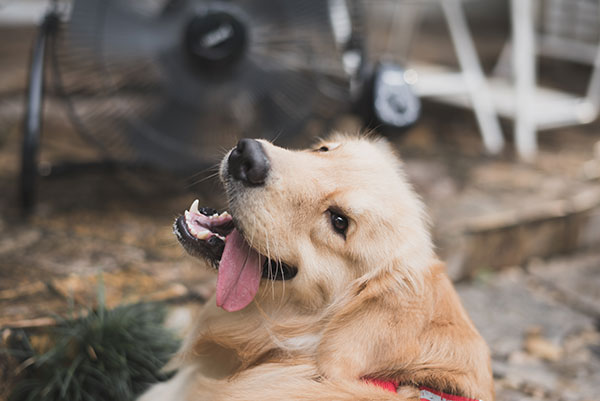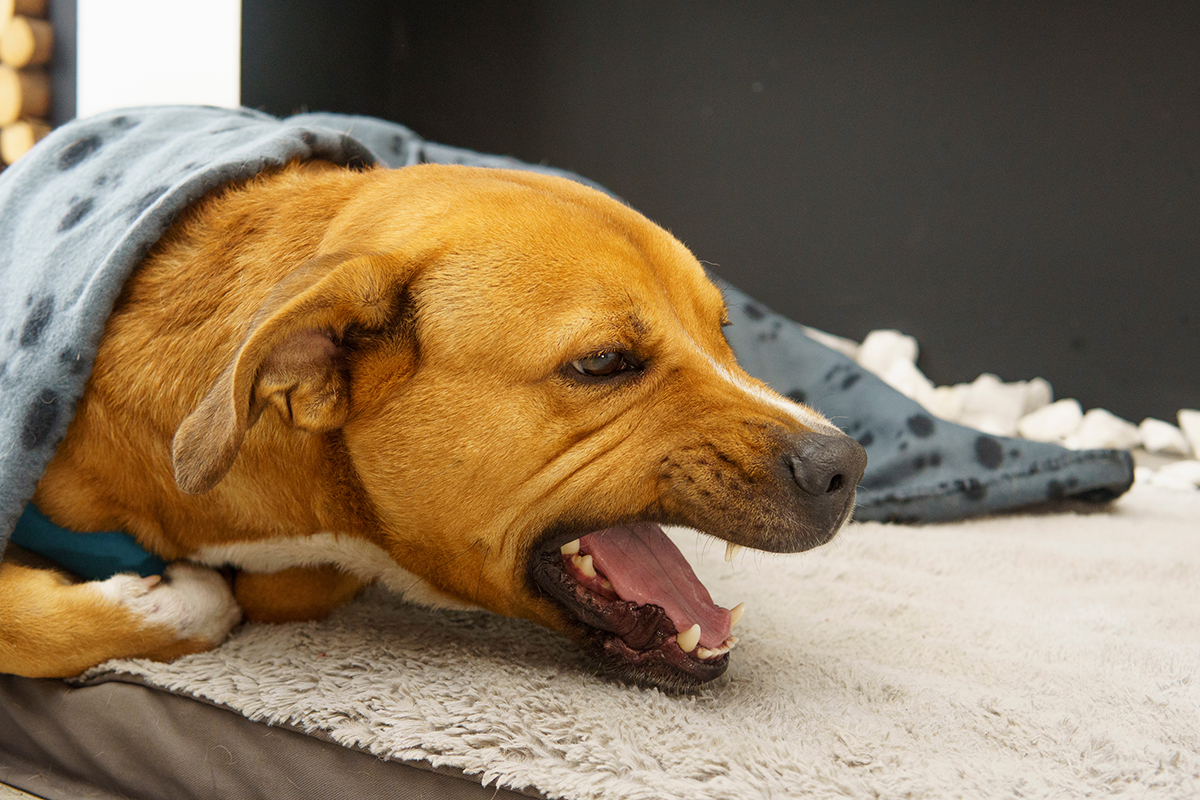Dogs Can Be Heat-Intolerant Too
 Heat stress in dogs on a hot August day can be just as miserable as it is in humans. Imagine yourself wearing a thick fur coat standing out in the sun in the middle of the day. That’s what it feels like to a dog, which are generally heat-intolerant. Using common sense can help prevent an animal from enduring heat stress, or even worse, heat stroke. But should a pet become overheated, knowing exactly what to do and immediate action can save its life.
Heat stress in dogs on a hot August day can be just as miserable as it is in humans. Imagine yourself wearing a thick fur coat standing out in the sun in the middle of the day. That’s what it feels like to a dog, which are generally heat-intolerant. Using common sense can help prevent an animal from enduring heat stress, or even worse, heat stroke. But should a pet become overheated, knowing exactly what to do and immediate action can save its life.
What are the Signs of Heat Stress and Heatstroke?
Heat stress in dogs and heatstroke normally happens when a dog loses his innate ability to regulate his body temperature. Unlike humans who sweat, a dog’s body temperature is primarily regulated by respiration by panting. Dogs with heavy fur coats and short muzzles tend to succumb to the heat more quickly than other breeds. When the respiratory tract fails to clear heat quickly enough, heat stress, and eventually heatstroke may occur, with some or all of the following signs:
- Increased heart rate
- Excessive panting
- Increased salivation
- Bright red tongue
- Red or pale gums
- Thick, sticky saliva
- Depression
- Weakness
- Dizziness
- Vomiting (sometimes with blood)
- Diarrhea
As heat stress progresses, a dog’s breathing efforts will become slow, or worse, absent, leading to seizures, coma, cardiac arrest, and death.
How To Prevent
To prevent overheating during the hot summer months follow these guidelines:
- Always keep older pets, and those with conditions such as heart disease, obesity, or breathing problems in the shade and cool, preferably indoors with a fan or air conditioning.
- Always have a shaded area accessible, away from direct sunlight, for all outdoor pets.
- Provide access to cool, fresh water at all times.
- Never leave your pet in a parked car, even if it’s in the shade or for just a few minutes.
- On a hot day, restrict exercise, usually to the early morning and evening. For working dogs, don’t push them too hard and give plenty of breaks throughout the day, with water or maybe a dip in a pool or stream.
- Don’t take your dog jogging with you. A human’s tolerance for heat and endurance well exceeds that of a dog’s.
- Do not keep the dog muzzled so they can pant unrestricted.
- Avoid places like the beach and hard topped surfaces where heat is reflected, unless they have access to an umbrella or other shade sources.
- Occasionally wet down the dog with cool water, or if there’s a pool, stream or sprinkler, let the dog enjoy a quick dip in it.
- Let you outdoor dog in. If for some reason the dog cannot be kept in the house, try this: freeze water in soda bottles, or mix ice and a little water in resealable food storage bags wrapped in a towel or tube sock. Place them on the ground in the shade for your pet to lay with.
What to Do When Signs of Heat Stress or Heatstroke Occur
1. Keep an eye out for signs of overheating – move the dog to a cool area immediately if any symptoms are present.
2. Contact Whitworth Animal Clinic immediately to alert us to prepare for your dog’s treatment.
3. Lower the dog’s body temperature – lower his temperature by wetting him with cool (never very cold, icy water) wet towels over neck, on inside of thighs, under armpits, and also wet earflaps and paw pads (for very small dogs, use lukewarm water). A dunk in the pool, if not too cold, can also work if speed is of the essence. Exposure to increased air movement helps the water evaporate and cool the dog down.
4. Take your pet’s temperature with a rectal thermometer. Normal body temperature is 101.5oF; 103o to 106o indicates moderate heating; above that is considered severe heat stress. Once the body temperature is 103ºF, stop the cooling measures, dry and cover the dog so the dog does not become chilled.
5. Give your dog fresh cool drinking water, never ice-water. To avoid choking, don’t force water into his mouth, and if the dog refuses to drink, try wetting his tongue.
Because overheating is potentially life-threatening to dogs if not treated immediately, knowing and being aware of the early signs of heat stress in dogs can reduce the chances of your pet succumbing to heatstroke. If your pet experiences any of the symptoms of heat stress and/or heatstroke, bring your dog into Whitworth Animal Clinic, serving Madison, Huntsville, Decatur and other surrounding areas. Even if your dog’s temperature may have come down there may be residual dehydration or other conditions and your pet may have to receive oxygen, some fluids, and other treatments.







Leave A Comment